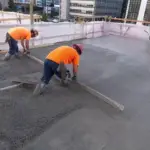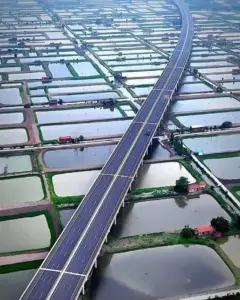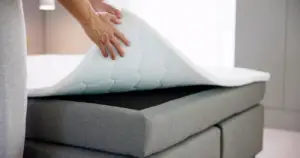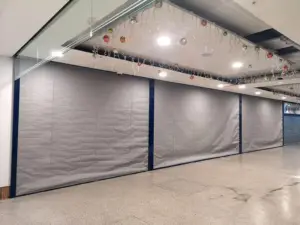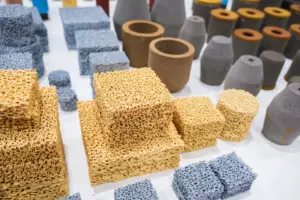Roofing solutions are a crucial aspect of civil engineering, as roofs protect buildings from various weather conditions. In recent years, there has been a significant improvement in roofing materials and techniques, enhancing the lifespan and durability of roofs. This article explores some of the innovative materials and techniques in civil engineering for roofing solutions. The article will cover materials, maintenance and repair, and the future of roofing.

Materials
The roofing material is an essential factor that determines the durability, efficiency, and lifespan of the roof. Over the years, innovative roofing materials have emerged, which have revolutionized the roofing industry. Here are some of the innovative roofing materials:
a. Thermoplastic Polyolefin (TPO): TPO is a single-ply roofing membrane that is made from thermoplastic olefin. It is a lightweight and energy-efficient roofing solution that is resistant to punctures, tears, and UV rays. TPO roofing is ideal for flat or low-sloped roofs and is easy to install and maintain. TPO roofing can also help reduce energy consumption as it reflects heat, thus keeping the building cool.
b. Photovoltaic Solar Panels: Photovoltaic solar panels are an innovative roofing material that combines the function of a roof with that of a solar panel. This roofing solution generates electricity from sunlight, and it is an eco-friendly and cost-effective roofing solution. The solar panels are installed on top of the roofing material, and they can help reduce energy costs and carbon footprint.
c. Green Roofs: Green roofs are an innovative roofing solution that involves growing vegetation on the roof surface. Green roofs provide insulation, reduce stormwater runoff, and enhance the aesthetic value of the building. Green roofs can also help reduce the heat island effect in urban areas, as they absorb heat and release it slowly.
d. Metal Roofs: Metal roofs are an innovative roofing material that is durable and long-lasting. Metal roofs can withstand harsh weather conditions and can last for up to 50 years. They are also fire-resistant and eco-friendly, as they can be made from recycled materials. Metal roofs are ideal for buildings that require a durable and long-lasting roofing solution.
e. Bio-Based Materials: Bio-based materials are derived from renewable resources, such as plants and animals, and have gained popularity in the roofing industry due to their eco-friendliness and durability. For instance, materials made from bamboo, hemp, and cork are being used as alternatives to traditional roofing materials. These materials are lightweight, strong, and have a low carbon footprint, making them a sustainable choice for roofing solutions.
f. Graphene: Graphene is a two-dimensional carbon-based material that has unique properties, such as high strength, flexibility, and electrical conductivity. Graphene can be incorporated into roofing materials to enhance their properties and improve their performance. For instance, graphene can be used as a coating on roofing materials to make them more resistant to water and heat. Graphene-based materials can also be used as a barrier against electromagnetic radiation, making them ideal for roofing solutions in areas with high electromagnetic interference.
Maintenance and Repair
Maintenance and repair are essential aspects of roofing solutions, and they play a significant role in enhancing the lifespan and durability of the roof. In fact, for homeowners in Sydney, it is important to keep up with Roof Repairs Sydney to avoid bigger issues down the line. Innovative techniques have emerged over the years that make maintenance and repair more efficient and cost-effective. Here are some of the innovative techniques in maintenance and repair:
Like Us on Facebook!
a. Infrared Scanning: Infrared scanning is an innovative technique that involves using infrared technology to detect moisture and leaks on the roof surface. This technique is non-invasive and can detect leaks and moisture without causing any damage to the roof. Infrared scanning can help detect leaks and moisture before they cause significant damage to the roof.
Subscribe Us on YouTube!
b. Drones: Drones are an innovative tool that is used in maintenance and repair of roofs. Drones are equipped with high-resolution cameras that can capture images and videos of the roof surface, and this can be used to detect damage and areas that require maintenance or repair. Drones can also access hard-to-reach areas, thus making maintenance and repair more efficient.
c. Sealant Sprayers: Sealant sprayers are an innovative tool that is used to apply sealant on the roof surface. This tool is efficient and can apply sealant on the roof surface evenly and quickly, saving time and reducing costs. Sealant sprayers can also help reduce the amount of waste generated during maintenance and repair.
The Future of Roofing
The future of roofing is promising, and innovative materials and techniques will continue to emerge. Some of the future trends in roofing include:
a. Self-Healing Materials: Self-healing materials are an innovative material that can repair themselves when damaged. This material is made of polymers that can heal cracks and other damages. Self-healing materials can help reduce the need for maintenance and repair and can enhance the lifespan and durability of the roof.
b. Smart Roofs: Smart roofs are an innovative roofing solution that incorporates technology to enhance the efficiency and functionality of the roof. Smart roofs can include features such as sensors that detect moisture, temperature, and other factors that affect the roof’s performance. Smart roofs can also include features such as rainwater harvesting systems and solar panels that generate electricity.
c. Nanotechnology: Nanotechnology is an innovative technique that can be used to enhance the performance of roofing materials. Nanotechnology involves manipulating materials at the atomic and molecular level to enhance their properties. Nanotechnology can be used to make roofing materials more durable, energy-efficient, and eco-friendly.
d. Eco-Friendly and Sustainable Materials: The roofing industry is becoming more conscious of environmental issues, and eco-friendly and sustainable materials will continue to gain popularity. Recycled and biodegradable materials will be used more in the roofing industry, as they are sustainable and reduce the environmental impact of the industry.
Conclusion
Innovative materials and techniques in civil engineering have improved the efficiency, durability, and sustainability of roofing solutions. Thermoplastic Polyolefin (TPO), photovoltaic solar panels, green roofs, and metal roofs are some of the innovative materials in the roofing industry. Infrared scanning, drones, and sealant sprayers are some of the innovative techniques used in maintenance and repair. The future of roofing is promising, with the emergence of self-healing materials, smart roofs, nanotechnology, and eco-friendly and sustainable materials. The roofing industry must continue to embrace innovation and sustainable practices to meet the increasing demand for eco-friendly and durable roofing solutions.

